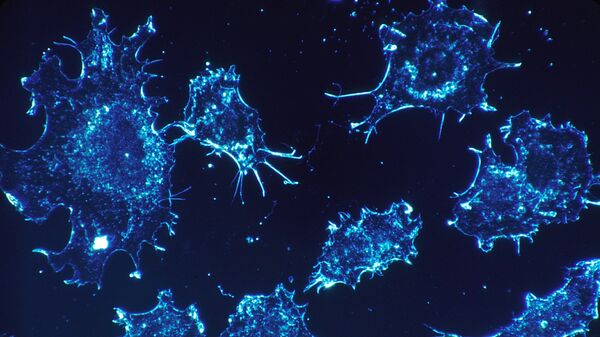Treating cervical cancer is an urgent problem of gynaecological oncology, since usually the currently widespread modern diagnosis methods involve surgical intervention. For example, in some cases, taking a tissue sample for a biopsy can entail undesirable phenomena and lead to dangerous consequences: uterine bleeding, the researchers noted.
Researchers at NRNU MEPhI and First Moscow State Medical University have come up with fluorescence diagnostics methods, which allow obtaining information about the state of tissues without affecting the biological processes occurring in them.
In fluorescence diagnostics and photodynamic therapy, a photosensitizer (light-sensitive substance) is introduced into the human blood. Tumour cells are able to accumulate such substances in much larger quantities than healthy cells. After a certain time, when most of the photosensitizer leaves normal cells, but remains in cancerous cells, the tumour is exposed to laser radiation of a certain wavelength.
“The chlorine-type photosensitizer absorbs radiation, producing reactive oxygen, which destroys nearby cancer cells and can damage blood vessels, thereby preventing cancer cells from receiving essential nutrients. In turn, the glow that occurs when the photosensitizer is treated by a laser is recorded using spectral and video fluorescent methods, allowing to accurately identify the tumour boundaries”, Polina Alekseeva, a postgraduate student at the Institute of Laser and Plasma Technologies, NRNU MEPhI, said.
She also pointed out that using spectral-fluorescent methods to diagnose cervical neoplasms makes it possible to control the photodynamic therapy process at all stages.
The results of a clinical study conducted by scientists together with surgeons say that photodynamic therapy treatment has been successful in all patients with morphologically confirmed leukoplakia (epithelium thickening and keratinization) and cervical dysplasia (precancerous condition) have undergone successful photodynamic therapy treatment.
“The study involved ten patients with morphologically confirmed leukoplakia and cervical dysplasia. The study protocol was approved by the Local Ethics Committee at Levshin Institute of Cluster Oncology”, Viktor Loschenov, the head of the study, professor at Institute of Engineering Physics for Biomedicine, NRNU MEPhI, said.
After three months, complete regression of the pathologically altered tissues (absence of tumour cells) was recorded in all patients. The study results also confirmed the possibility to use the new method to destroy the human papillomavirus, while maintaining the normal physiological structure of the cervix, which is especially important for women planning a pregnancy.
In the future, the NRNU MEPhI research team wants to improve the photodynamic therapy method to timely change the treatment tactics and avoid under-exposure or over-exposure, which could lead to relapses.
The study results were published in Laser Physics Letters journal.





